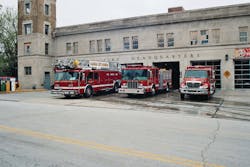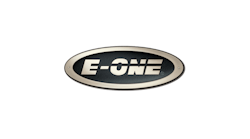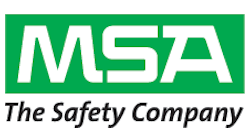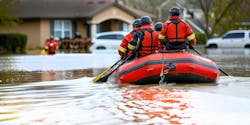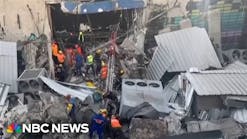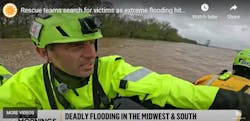Kansas City, KS, is located at Kaw Point, the junction point of the Kansas and Missouri rivers. It is the third-largest city in Kansas and the third-largest city in the Kansas City metropolitan area, which has a population of more than 2 million. Kansas City, KS, an area of 127 square miles of land and 3.5 square miles of water, is situated on the western shore of the Missouri and Kansas rivers and has a population estimated at 150,000.
The Kansas City, KS, Fire Department has approximately 425 uniformed personnel under the leadership of Chief John Paul Jones. Firefighters operate out of 18 fire stations with 16 pumpers (an apparatus with a pump is called a pumper in the Kansas City metro area), three aerial ladders, three quints, one heavy rescue, 12 medic units with three backups, four fire-rescue boats, a foam truck, three brush trucks, two hazardous materials response vehicles and a hazmat support unit. The department also operates a special Urban Search and Rescue (USAR) heavy rescue vehicle. Specialized units include hazmat, high-angle rescue, trench rescue, dive and confined-space rescue teams. The Fire Communications Division operates out of the Unified Government’s Public Safety Dispatch Center and is responsible for processing, dispatching and coordinating emergency and non-emergency calls. In 2009, the division handled more than 44,500 calls, including over 25,000 calls for service.
Kansas City, KS, formed its hazmat team in 1979. The team was originally based at Station 6 at 1103 Osage Ave. along with Pumper 6. The first hazmat unit was a converted International army truck. Today’s Hazmat Units 2 and 3 are identical 2007 Freightliner step-van-type response vehicles with independent-entry capability. Hazmat 2 has reduced monitoring capability when responding alone. Hazmat 3 personnel specialize in monitoring and entry. Hazmat 2 carries extra radios not available in Hazmat 3. Hazmat 2 team members specialize in library and research functions.
Kansas City’s hazmat units are not dedicated. The crews of Stations 2 and 3 provide personnel for the hazmat units during a response. Station 3 personnel include two medics and four firefighters on Pumper 3 and Truck 3, all hazmat technicians. There are always six personnel in Station 2 who are technicians including two medics and four firefighters. Each shift has 11 assigned hazmat technicians on duty with nine or more others at additional companies around the city. Station 2, at 6241 State Ave. in West Kansas City, houses Quint 2 and EMS 2, which is an advanced life support (ALS) ambulance, in addition to Hazmat 2. Quint 2 is a 1997 E-ONE with a 75-foot ladder and 1,250-gpm pump. Station 3, at 420 Kansas Ave. in East Kansas City, houses Hazmat 3, Pumper 3 and Medic 3. Station 16, at 1437 South 55th St., houses the decontamination team (Pumper 16) that responds on hazmat calls to provide support for Hazmats 2 and 3.
Respiratory protection carried on the hazmat units includes MSA 60-minute self-contained breathing apparatus (SCBA), cartridge respirators and powered air-purifying respirators (PAPRs). Level A chemical protective clothing includes Kappler Lifeguard Responder Suits, along with various gloves and boots. Level B protective clothing carried on the hazmat units also is made by Kappler. Monitoring and detection equipment includes the M9 and 561 kits, pH paper, Radiac meters, AIM 3250 gas detectors, Dräger pumps and tubes, MSA Orion multi-gas meter and HazCat chemical test kit. Decontamination equipment and tools, various absorbent pads, patching and plugging tools, and assorted other equipment and supplies common to hazmat units are carried on Hazmat 2 and Hazmat 3.
A full hazmat assignment in Kansas City would include the department safety officer, a battalion chief, a medic unit, both hazmat units, the first-due pumper company and the hazmat coordinator. If entry is required, Pumper 16 is dispatched for decontamination. When Level A entry is required, mutual aid usually is requested as well. Primary mutual aid for hazmat comes from Kansas City, MO, but there are other teams in the metropolitan area as well. The hazmat team is requested when a spill is larger than a pumper company can handle.
Hazmat team members volunteer to be on the team. They receive training from Environmental Protection Agency (EPA) Region VII, local community colleges and equipment manufacturers. Team members also train with other metropolitan departments. All other response personnel on the Kansas City, KS, department are trained to the hazmat operations level.
Kansas City, KS, also operates one of nine Metropolitan Medical Strike Team trailers that are strategically located throughout the metro area. Trailers are set up differently, depending on tactical objectives. The Kansas City team specializes in decontamination, Mark I Auto-Injector Kits, tents, water heater, showers, pools, and heaters for winter and misting fans for summer.
Major transportation routes include Interstates 35, 70, 435, 635 and 670. U.S. Highways 24 and 40 also pass through Kansas City. State routes include K5, K7 and K32. Railroads that service Kansas City include Union Pacific, Burlington Northern Santa Fe, Southern Pacific and KCT. Major hazardous materials fixed facilities include Procter & Gamble, Barsol Solvents, ConocoPhillips and Magellan pipelines, and Kansas University of Kansas medical laboratories. Common hazardous materials found in the city include bulk petroleum, chlorine, anhydrous ammonia, propane and refrigerants.
One of the city’s major hazmat responses occurred at the Magellan distribution terminal at 401 Donovan Road on June 6, 2008. Lightning struck a 1.2 million-gallon unleaded gas storage tank, setting it on fire. Hazmat units conducted air monitoring at 60 locations throughout the metro area affected by smoke from the fire. Air monitoring was conducted in partnership with other teams from around the Kansas City metropolitan area, including EPA Region 7, using Area RAE detection equipment, as the incident affected a large portion of the metro area on both the Missouri and Kansas sides of the state line. Fire units decided to let the fire in the tank burn itself out while protecting surrounding tanks and other exposures. The fire was contained to the original tank and a berm area designed to contain leaking fuel from the tank. The facility also contained tanks of jet fuel, ethanol, diesel and other fuel oils that were not involved in the fire.
• • •
For additional information, contact Chief Craig Duke [email protected].
ROBERT BURKE, a Firehouse® contributing editor, is the fire marshal for the University of Maryland Baltimore. He is a Certified Fire Protection Specialist (CFSP), Fire Inspector II, Fire Inspector III, Fire Investigator and Hazardous Materials Specialist, and has served on state and county hazardous materials response teams. Burke is an adjunct instructor at the National Fire Academy and the Community College of Baltimore, Catonsville Campus, and the author of the textbooks Hazardous Materials Chemistry for Emergency Responders and Counter-Terrorism for Emergency Responders. He can be contacted at [email protected]t.
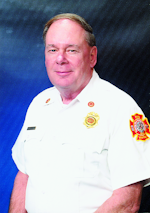
Robert Burke
Robert Burke, who is a hazardous materials and fire protection consultant and who served as a Firehouse contributing editor, is a Certified Fire Protection Specialist (CFSP), Fire Inspector II, Fire Inspector III, Fire Investigator and Hazardous Materials Specialist. He has served on state and county hazmat teams. Burke is the author of the textbooks "Hazardous Materials Chemistry for Emergency Responders," "Counter-Terrorism for Emergency Responders," "Fire Protection: Systems and Response," "Hazmat Teams Across America" and "Hazmatology: The Science of Hazardous Materials."
